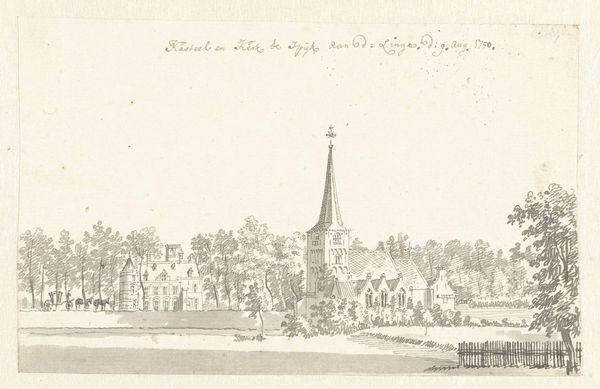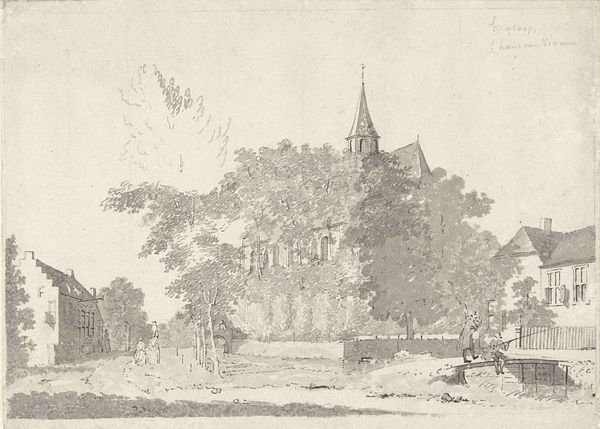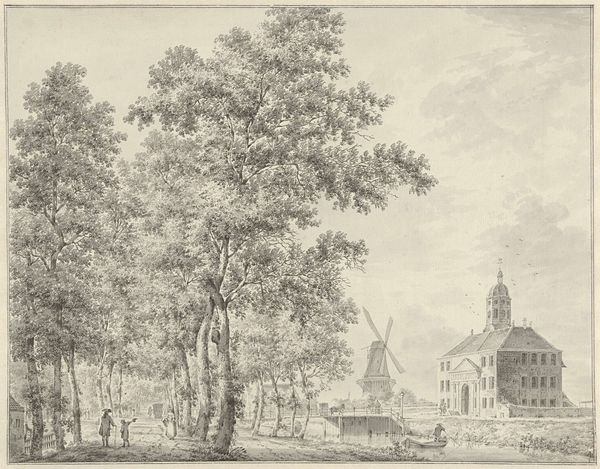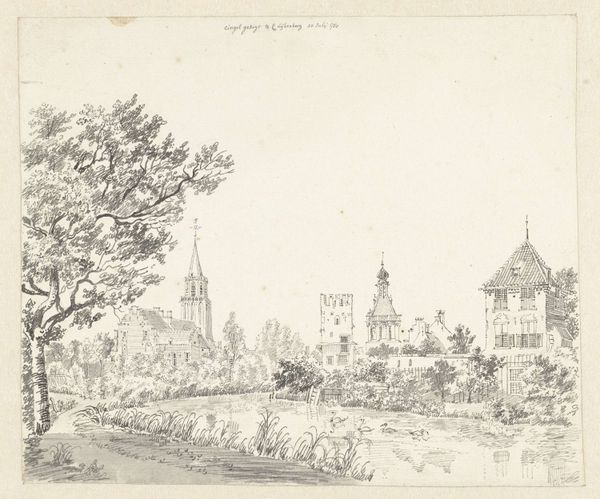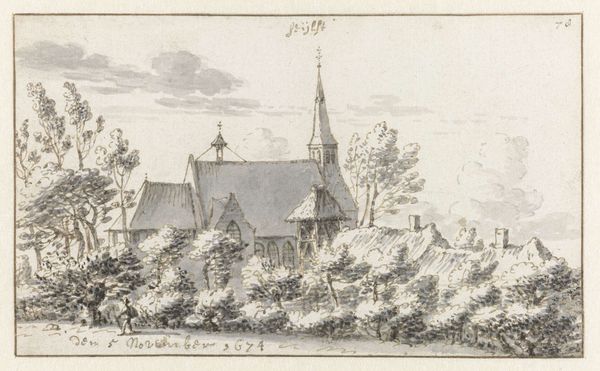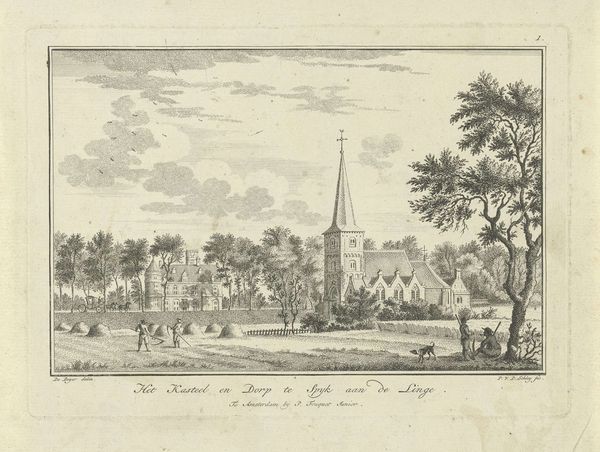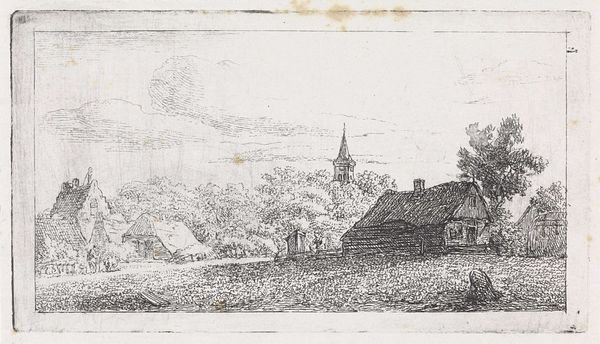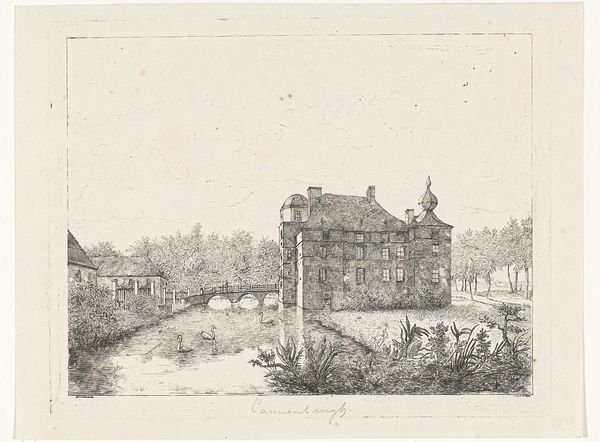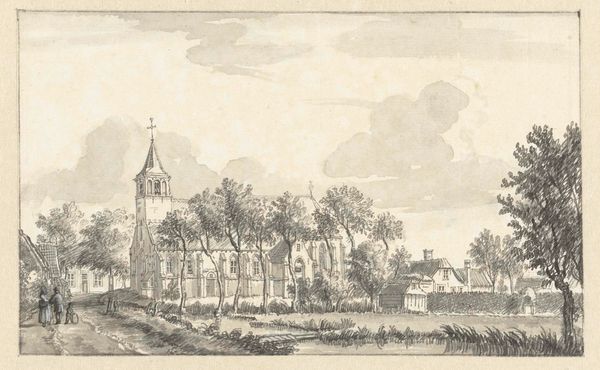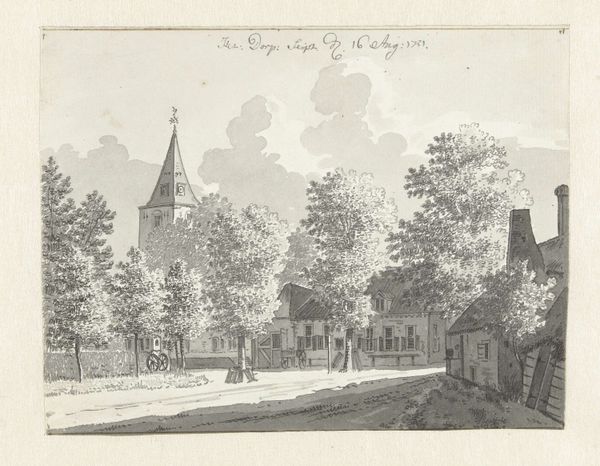
drawing, paper, ink
#
drawing
#
dutch-golden-age
#
landscape
#
paper
#
ink
#
cityscape
Dimensions: height 159 mm, width 220 mm
Copyright: Rijks Museum: Open Domain
Curator: Here we have Jan de Beijer's "Gezicht te Culemborg," dating possibly from 1750 to 1757. It’s an ink drawing on paper, offering a cityscape view. Editor: My first impression is how tranquil this image feels. The limited color palette—just blacks and grays—almost seems to soften the buildings. You really notice the paper grain. Curator: It's a wonderful example of Dutch Golden Age landscape drawing, reflecting the growing civic pride of the era and the increasing importance of depicting specific locations. These cityscapes often functioned as records but also as a kind of idealized branding. Editor: Absolutely, but look at how de Beijer crafted this. The visible strokes, the texture he achieved with what appears to be a pretty limited range of inks—it gives this documentary piece such palpable human involvement in representing the urban landscape. Curator: True, and notice the positioning of the various landmarks. They aren’t simply copied; rather, they're carefully placed within the composition to highlight the city’s significance. This speaks to the socio-political role artists played in shaping local identities. Editor: Right, the labor of representing place has purpose. And it’s not just about showing power, but also the texture of everyday life: the waterways, those few strokes of the pen becoming reeds. I am thinking how this paper was manufactured. Curator: Also consider the art market and the patronage system. De Beijer likely created this either for sale to wealthy citizens or as part of a commission. The work therefore reinforces existing social hierarchies while creating a space for civic art. Editor: So the production isn’t just Jan with a quill—it is tied into land use and civic management! A lot to contemplate on what appears to be a simple sketch. Curator: Indeed. What begins as a seemingly straightforward depiction unravels to show the layers of the cultural and societal forces at work in the creation of a town’s image. Editor: For me it is fascinating to notice those visible materials used to draw what has become civic visual shorthand. It really draws one's attention to the labor and industry of its time.
Comments
No comments
Be the first to comment and join the conversation on the ultimate creative platform.
